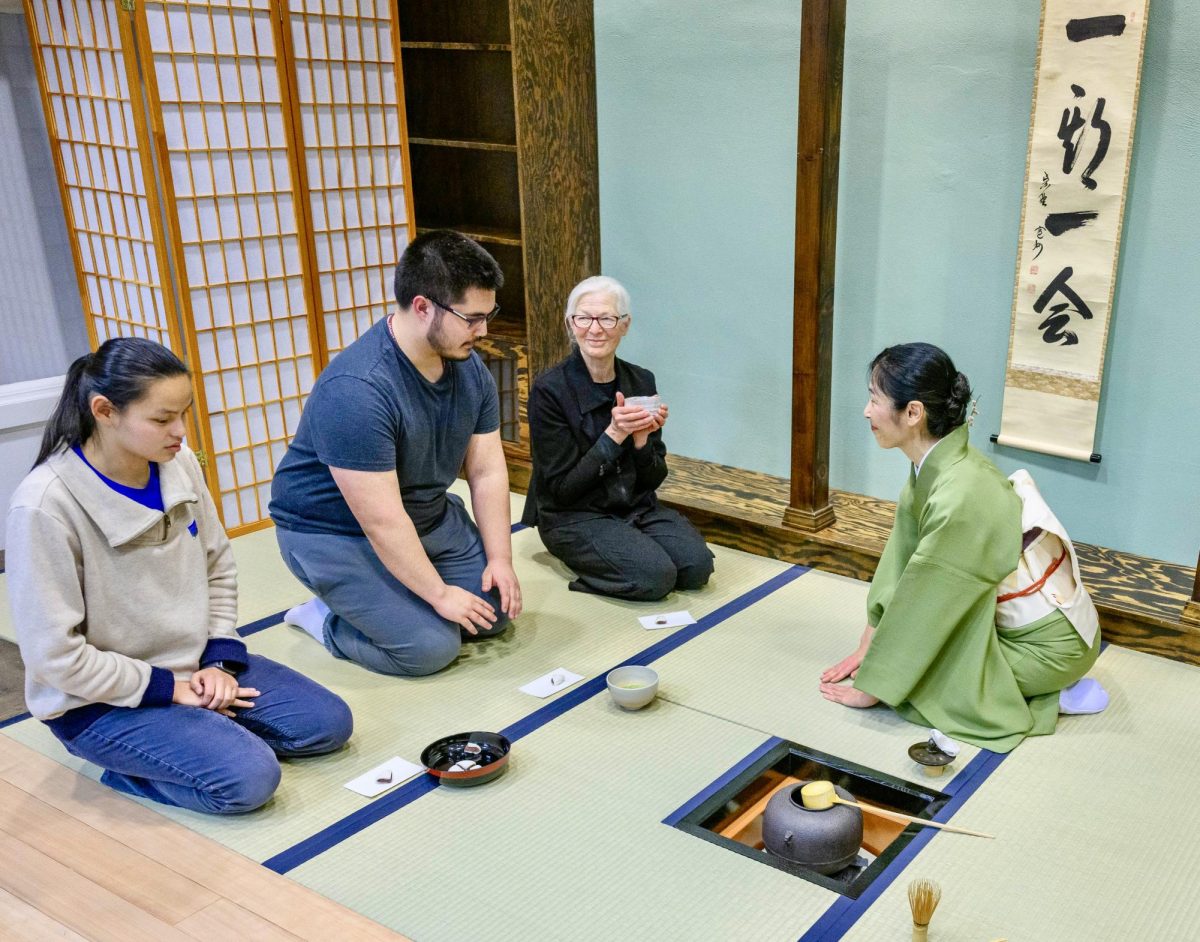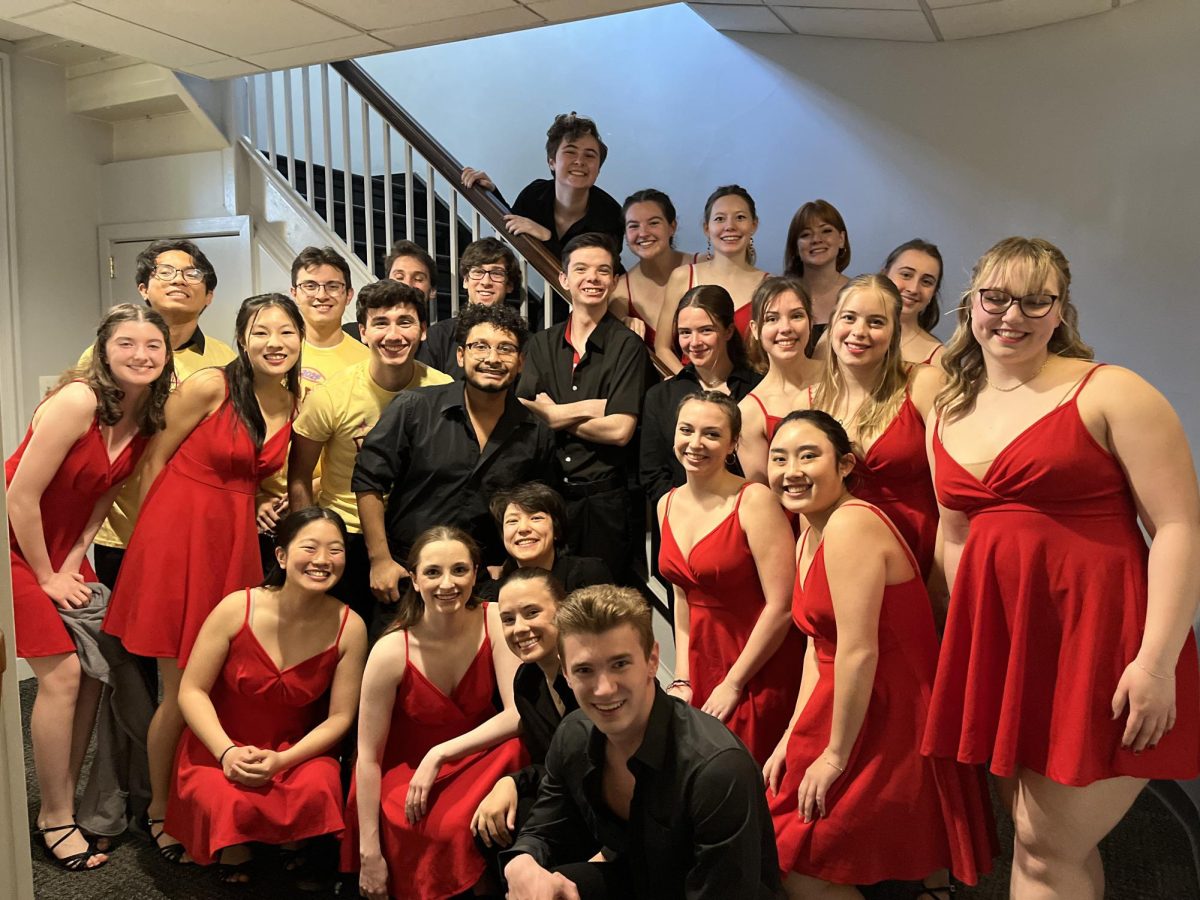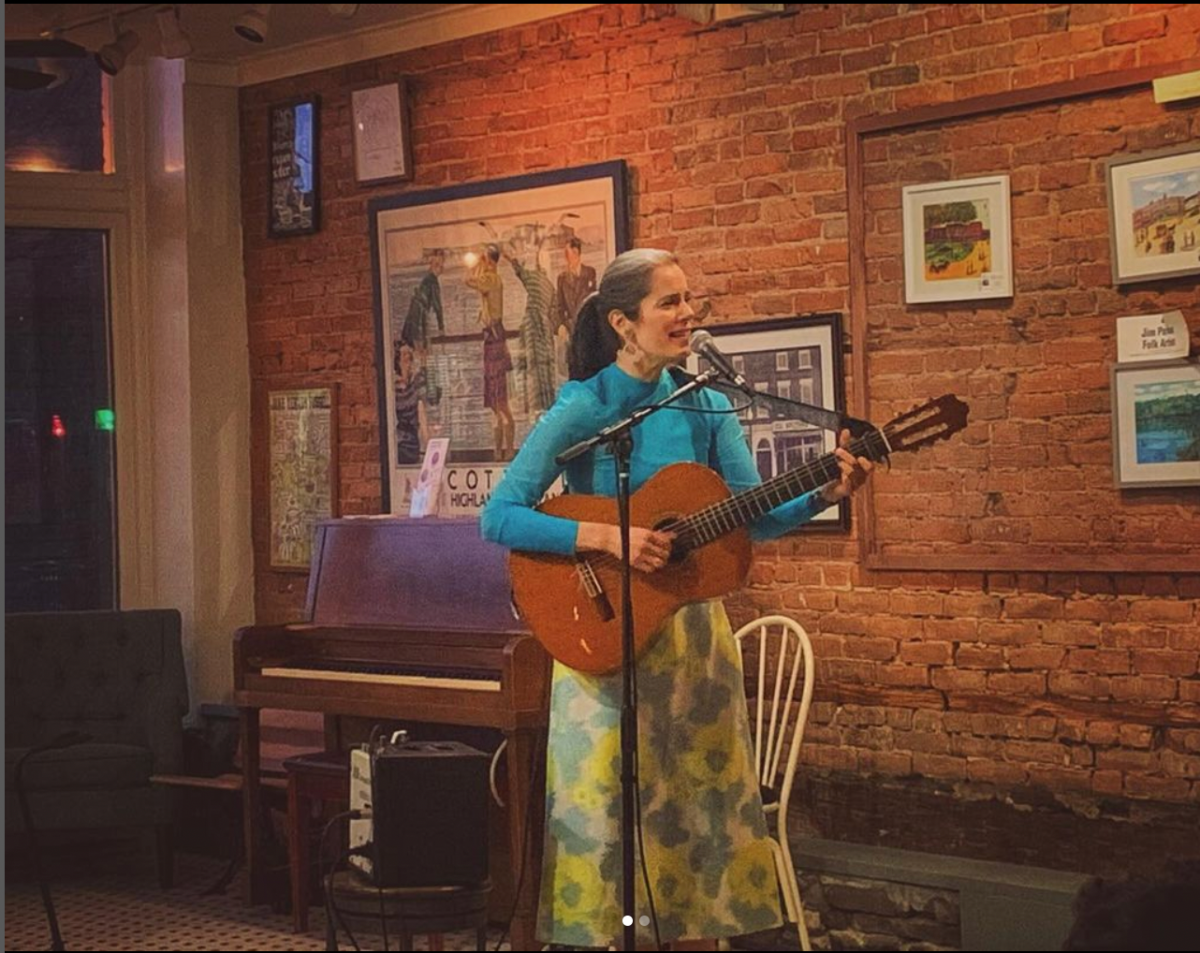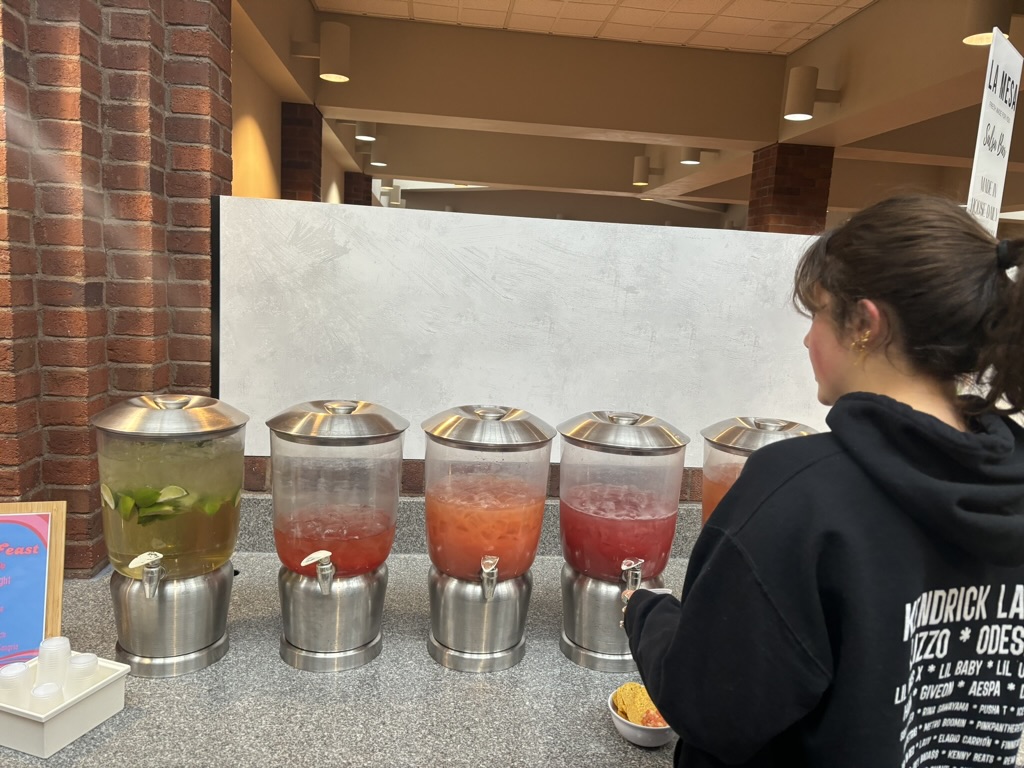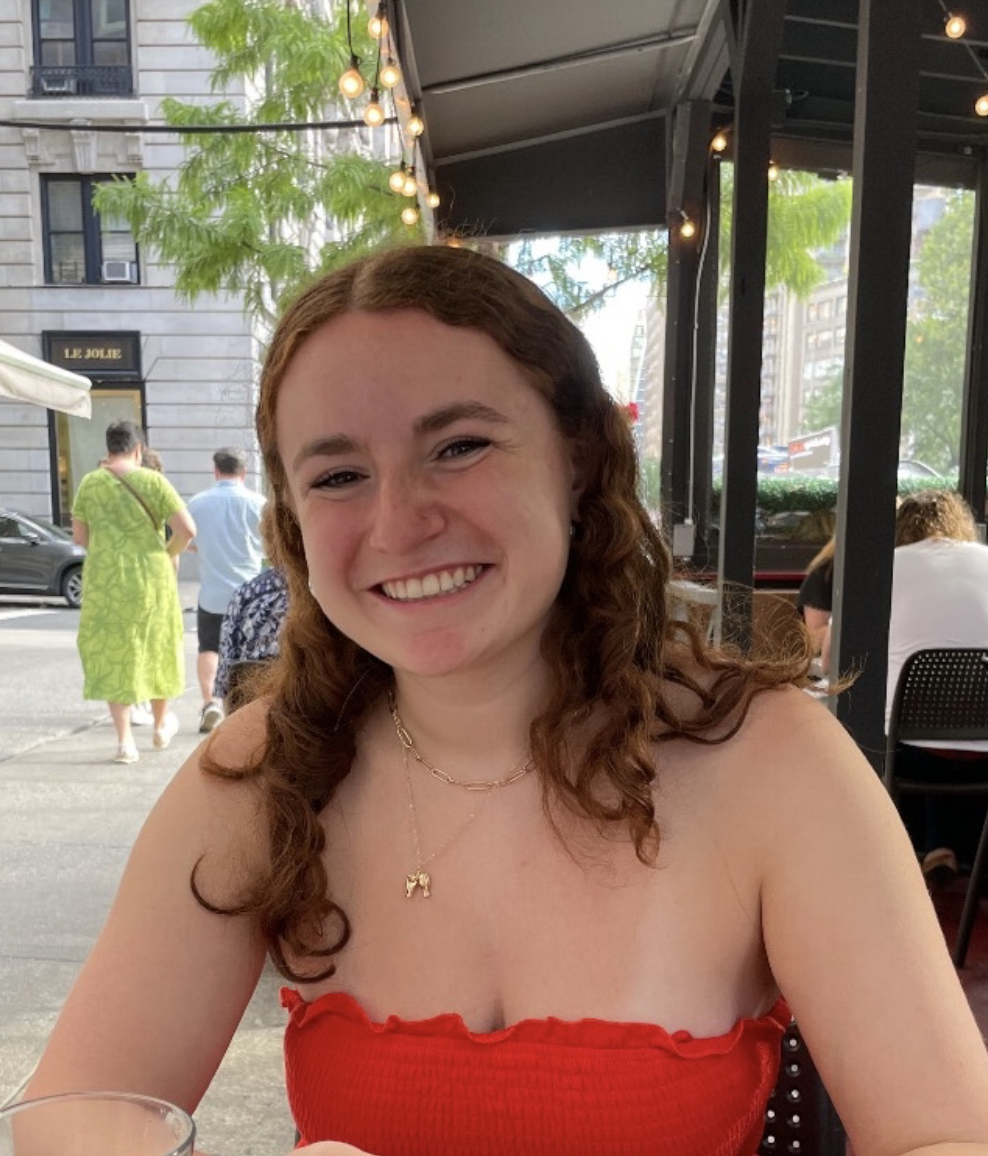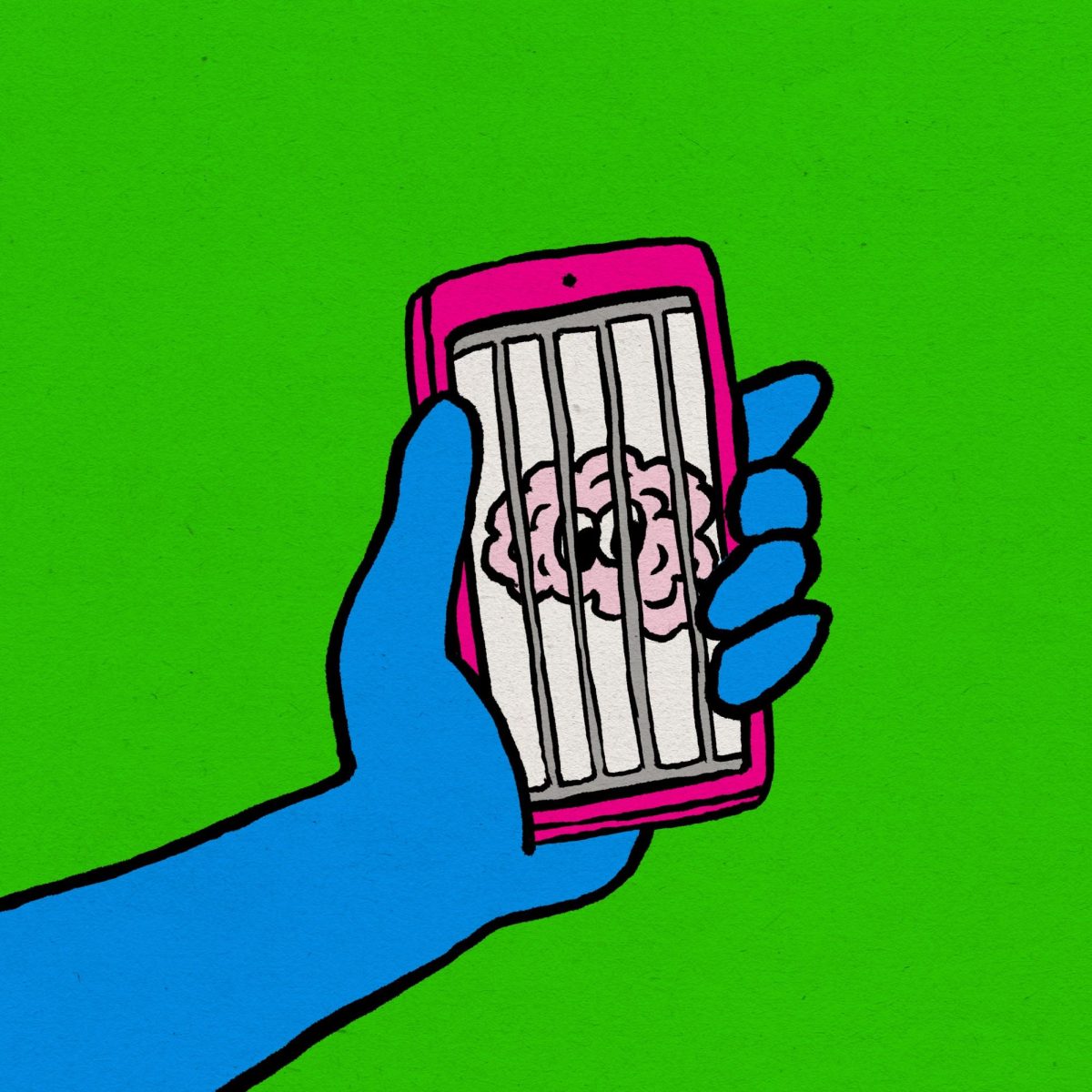Students and faculty joined Harrington and Shirley Drake Professor of Japanese and Linguistics Yukari Hirata on Tuesday, Feb. 13, to learn about how the Japanese tea ceremony fits into a liberal arts education at Colgate University. Hirata is also the current chair of the department of East Asian languages and literatures and director of the linguistics program.
In addition to these titles, Hirata is currently undergoing the process of becoming an official tea instructor. She currently has two of six certificates, with a third on its way from Japan. This semester, Professor Hirata is teaching JAPN 255: Hidden Japan: Tea Ceremony, which has a 15 seat maximum and no prerequisite. This talk occurred in conjunction with Professor Hirata’s new course, and she shared some of her findings from her sabbatical in Kyoto, Japan.
At the beginning of the event, Hirata explained “the way of tea,” or the meaning behind the Japanese tea ceremony. Japanese tea master Sen no Rikyu, who lived from 1522 to 1591, stylized the ceremony and believed that tea was for everyone, despite their class. Rikyu sacrificed his life for tea, as his beliefs were against that of the ruler at the time and he was ordered to commit ritual suicide. Ultimately, his perfected tea ceremony became a lasting aspect of Japanese culture.
First-year Koko Nagatomo explained her motivations behind attending the event.
“For me, it was an important event to attend since I myself am Japanese-American,” Nagatomo said. “Being at Colgate, I definitely feel a little disconnected [from] that part of my identity as it does not surround me on the same level as it would in my home life, so I felt that this would be a good way to reconnect with that side of me.”
At a Japanese tea ceremony, a host makes matcha whisk tea for their guests’ enjoyment. The ceremony reminds people of “ichigo ichie,” or the cultural idea of the importance of treasuring a moment. Despite its scripted performative nature, every ceremony is unique. Hirata emphasized that the tea ceremony urges participants to pay attention to what is happening around them and have focus, attention and peace of mind. It encourages participants to slow down and separate themselves from the distractions and stressors in their lives throughout the duration of the tea ceremony.
The event took place in Colgate’s newly renovated tea room, which was carefully curated by the faculty in the East Asian languages and literatures department — specifically, by Hirata.
A central aspect of the tea room are tatami boards, made out of Igusa, a natural rice straw. Tatami is a reminder of the things that change because its own changes are witnessed as it ages in the tea room. Tatami’s color and aroma change as it ages, for example. It also serves as a natural humidity controller in the tea room and stays warm in the winter and cool in the summer. The boards form a rug attached to a hard board with hand-stitching.
Hirata thanked two special contributors to the tea room in Lawrence Hall.
“My special thanks to the Motoyama Tatami Shop and the Ushio Mirakudo Tea Utensil Shop, both of which are small and family-run across generations in Japan,” Hirata said. “Colgate now has a deep long-term connection with them on the other side of the globe.”
Mr. Motoyama, a tatami specialist, and Mr. Mori, a tea room specialist, created the sunken hearth and wooden frame seen in the tea room. Students listened to their lecture about tatami and then learned about its cultural significance during their visit to the tea room. While at Colgate, Motoyama and Mori collected precise measurements to create custom boards for the tea room. When the boards arrived at Colgate from Japan, Motoyama directed their installation via Zoom as a team of around 15 installed the tatami boards.
Hirata also shared a condensed version of the Japanese tea ceremony with attendees, as its typical length is approximately four hours. She shared some of her personal experiences and sentimental memories throughout the ceremony.
Nagatomo shared her thoughts on Hirata’s event.
“I have always been aware of the historical and cultural significance of tea. The Japanese tea ceremony is an art form that is complex but simple at the same time. Although I had some prior knowledge and idea of how the tea ceremony works, this was actually my first time witnessing it,” Nagamoto said. “I really enjoyed learning about Professor Hirata’s journey in learning the intricacies of the tea ceremony. A lot of what she spoke about, particularly the concept of ‘ichigo-ichie,’ reminded me a lot of the Japanese teachings that have been instilled in me, like finding beauty in simplicity and living in the moment. And, of course, it was nice to have some Japanese sweets again.”
First-year Jonathan Cheng also shared his experience attending the event.
“I enjoyed how accessible the lecture was to everyone, as normally one has to take an upper-level Japanese course to be part of the tea ceremony,” Cheng said. “Thus, this allowed me to witness a meaningful part of Japanese culture.”
The tea room was filled with curious minds who were eager to participate in the colloquium event. In response to Hirata’s lecture, attendees posed questions concerning alternate uses for the tea room, the length of the ceremony, the frequency at which it is used and if it is truly enjoyed by everyone in Japan.
Hirata enthusiastically shared her gratitude for how the event turned out.
“I’m happy about how the event went this Tuesday. It was my way of thanking wonderful people who were involved in this tea room project,” Hirata said. “Much appreciation goes to Colgate alumni’s Japanese Studies Fund and my Harrington and Shirley Drake chair in the humanities. It involved huge international shipping and traveling made it complex and bumpy in some moments, but I was very touched by the kindness and support of the people who trusted me to lead to a success. I’m deeply committed to return my thanks to Colgate.”
At the end of the event, students and faculty discussed the ongoing battle of cultural appropriation and cultural appreciation in today’s world. While there was no consensus on how to fix this issue, the group now has a collective understanding on what constitutes appropriation and appreciation.


